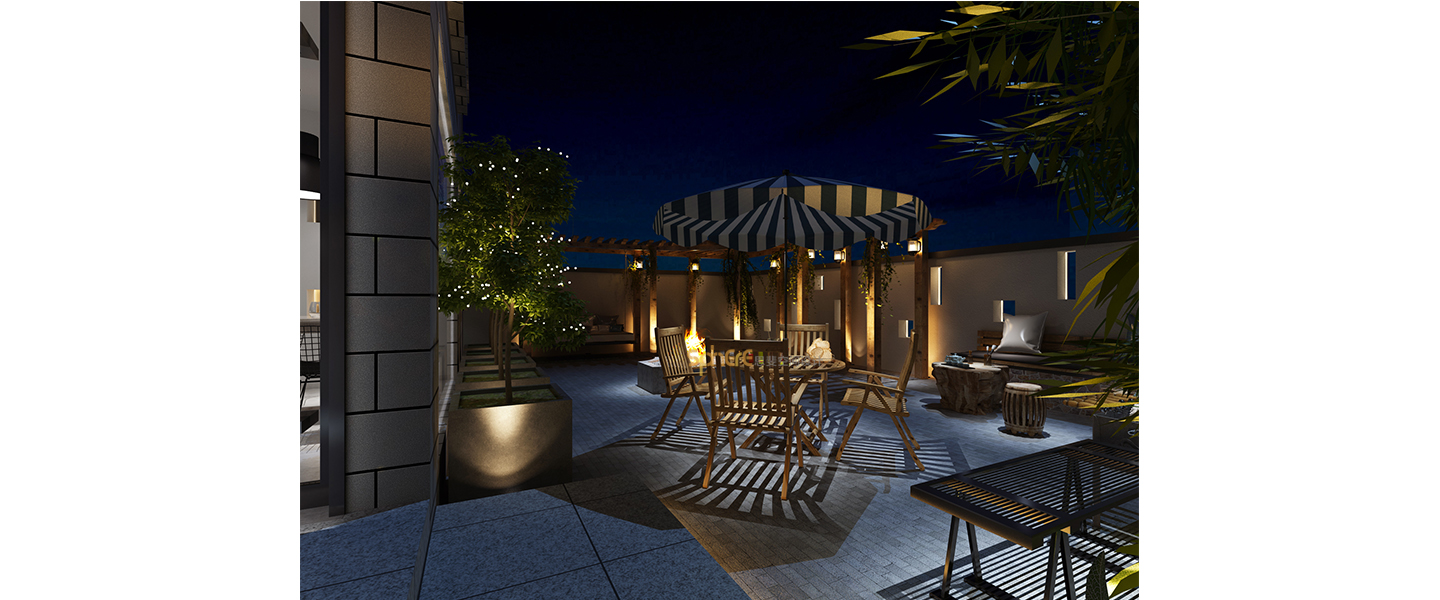De Borneohof Peter Geusebroek
2011-10-04 00:00
架构师提供的文本描述。2007年,作为整个印度社区重建计划的一部分,阿姆斯特丹东区市政府决定拆除一个结构坚固的街区。230所小房子将被新的住房所取代。这一激进的行动必须为把运转不良的广场变成印度社区生动的心脏铺平道路。该建筑物将有一个地下停车场,以便能够降低广场和周围街道的停车密度。重建也带来了在住房方面提供更多样化的机会,例如调整后的住房。此外,还增加了社会文化设施,以加强中心地位。
Text description provided by the architects. In 2007, as part of an overall renewal plan for the Indian neighbourhood, the municipality of Amsterdam East decided to run-down a structural sound block. The 230 small houses were to be replaced by new housing. This radical operation had to pave the way to transform the bad functioning square into the vivid heart of the Indian neighbourhood. The building was to have an underground parking garage, to be able to lower the parking density at the square and surrounding streets. Rebuilding also brought the opportunity to offer more diversity in housing, such as care-adjusted houses. Furthermore, socio-cultural facilities were added in the plinth to strengthen the central position.
Courtyards, a new habitat for Amsterdam
这些公寓被围成四合院。这个栖息地来自柏林的(Hackeschen H Fe)庭院,那里的居民聚集在一起,形成了一个小的城市社区。公寓的所有入口和室外空间都朝向庭院,增加了亲密的气氛。
The apartments are grouped around courtyards. This habitat is derived from Berlin’s (Hackeschen Höfe) courtyards, where residents meet and form a small urban community. All entrances and outdoor spaces of the apartments are orientated towards the courtyards and add to the intimate atmosphere.
庭院是通过四个宽敞的大门到达的。这些大门使街道和街道都能看到庭院,反过来也是如此,它们相互连接,而不是排斥关系。其中两个大门有巨大的艺术品,由设计师皮特-海因·埃克(PietHeinEek)收集的旧门制成。
The courtyards are reached through four spacious gates. These gates make the courtyards visible to the street and vice versa, connecting instead of rejecting relations. Two of these gates have huge pieces of artwork, made out of a collection of old doors, by designer Piet Hein Eek.
Architecture, inspired on the 19th century
这座建筑几乎完全遵循旧的建筑情节,只在爪哇广场倒退。这一点在建筑物的建筑表达中也得到了强调。在建筑遵循旧式城市规划的地方,立面的设计是基于继续在附近建造建筑师Weisman的建筑。
The building almost entirely follows the old building plot and is only set back at the Java Square. This is also emphasised in the architectural expression of the building. Where the building follows the old urban plan the design of the façade is based on continuing the architecture of architect Weisman in the neighbourhood.
他的设计特点是严格的窗户节奏,被成组的门、楼梯和高高的屋顶所打断。这也是在新的设计中保持的。广场建筑的设计不遵循旧的建筑情节,因此是自主的。拱廊和塔楼朝向广场,在高度和纪念碑上占主导地位。纤细的塔起着至关重要的作用。由于它的剪切高度,它可以从附近的大部分可见,这是一个引人注目的广场和地区。
The characteristics of his designs are strict rhythms of windows, interrupted by grouped doors, a staircase and raised roof. This is also maintained in the new design. The design of the square building does not follow the old building plot and is thus autonomous. The arcade and tower are oriented towards the square, dominating it by height and monumentality. The slender tower plays an essential role. Because of its shear height it is visible from large parts of the neighbourhood, a striking given for the square and area.
The arcade is a notable urban addition and link between square and building.
由于精心设计的建筑和众多的新功能,博尔新霍夫是印度周边地区逆转的象征。这是一座很大的温暖的建筑,有许多城市功能,人们可以在那里感觉宾至如归。
Because of the careful architectural elaboration and numerous new functions, the Borneohof is a symbol for reversal in the Indian neighbourhood. It is a large warm building, with many urban functions, where people can feel at home.
Text provided by Peter Geusebroek.
 举报
举报
别默默的看了,快登录帮我评论一下吧!:)
注册
登录
更多评论
相关文章
-

描边风设计中,最容易犯的8种问题分析
2018年走过了四分之一,LOGO设计趋势也清晰了LOGO设计
-

描边风设计中,最容易犯的8种问题分析
2018年走过了四分之一,LOGO设计趋势也清晰了LOGO设计
-

描边风设计中,最容易犯的8种问题分析
2018年走过了四分之一,LOGO设计趋势也清晰了LOGO设计


















































































































